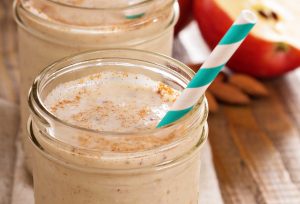
An old proverb states: “Fish, to taste good, must swim three times: In water, in butter, and in wine.” This homage to butter has since been overshadowed by its artery clogging reputation. As most of us know, butter is high in saturated fat and calories. And yet, in moderation, as Julia Child demonstrated regularly, butter can be one of your best friends in the kitchen. Of course, moderation is truly key here.
In the past 50 years, largely due to the rise of heart disease, a fear of fat among Americans filled our grocery shelves with highly processed “fat-free” foods. But these are not necessarily healthier. Many of the pre-packaged, processed foods are full of chemicals and other unfriendly ingredients that make a bit of butter seem downright healthy.
In fact, our bodies need fats. Fats provide energy, help build the fatty sheath that surrounds nerve fibers in our brains, and support healthy skin and vitamin absorption. However, much depends on the quality of the fat. Although butter is delicious (let’s admit it, shall we?), healthier fats such as olive and canola oil should be the marquee stars in your kitchen.
Butter is high in saturated fat and contains very small amounts of natural trans fats. Saturated fats and trans fats have been extensively researched for their links to weight gain, heart problems, and diseases including cancer. Researchers are finding however, that natural trans fats found in butter, are much less dangerous to our health than man-made trans fats found in some margarine products that contain hydrogenated oils.
Butter is a centuries old natural product made by simply churning cream, while man-made trans fats are created using “hydrogenation,” an industrial process by which hydrogen atoms are added to unsaturated fats so they become solid and shelf stable.
According to the Center for Disease Control and the American Institute for Cancer Research, the intake of artificial types of trans fats found in many highly processed foods should be kept as low as possible. Studies have found that artificial trans fats are related to both an increased risk for heart disease and may also raise the risk of cancer. Because of this, if you choose not to eat butter and opt instead for margarine, make sure to buy a brand with no trans fat such as products made by Smart Balance.
Ann’s Tips
Always use butter sparingly, but if you’re making something that calls for a lot of butter, eat very small portions. Since we’re generally talking about using small amounts, buy the best. Look for unsalted organic butters, or butters made from milk from grass fed cows such as French butter from Normandy, or Danish Lurpak. They’re expensive, but a real taste-treat, and you will use less for more buttery taste. To keep sodium levels down, always buy unsalted or sweet butter.
Recipe Tips
A little butter can add a lot to your cooking. A pat of butter makes a slice of toast a treat, adds creaminess to risotto, and can turn a simple sauce velvety. Butter is also the best natural non-stick agent there is. Keep butter wrappers to smear round cake tins or frying pans when cooking eggs or pancakes. Butter is of course great in baking. To prove a little goes a long way try our delicious Cranberry Walnut Scones which uses only 2 tablespoons for an entire batch. For something a lot naughtier, but very nice, try our Chocolate Marble Pound Cake. Just don’t eat the whole thing. One small slice will provide plenty of pleasure.












Reviews & Comments
No reviews yet.
Leave a Review or Comment